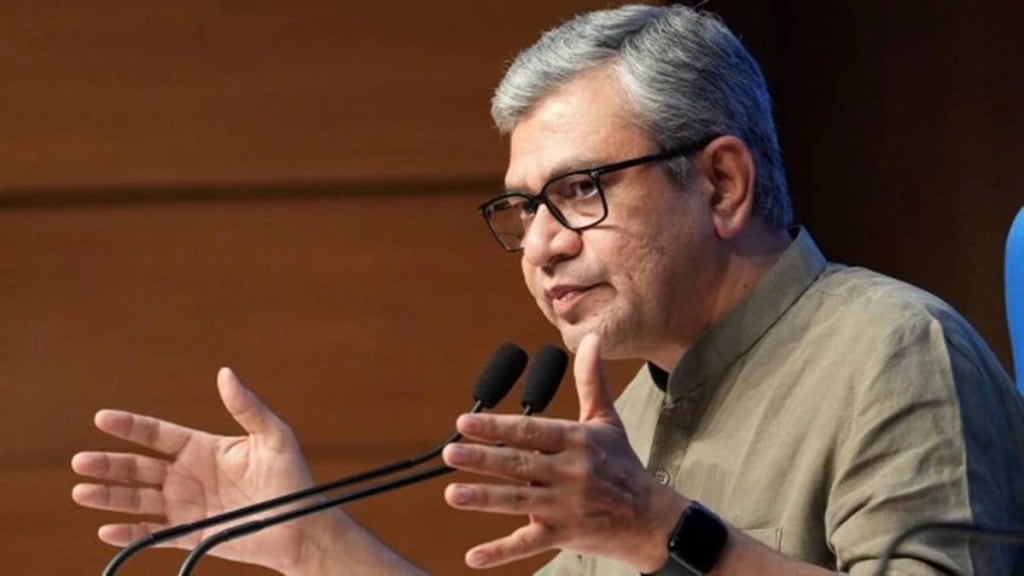The Indian Railways will continue to prioritise safety in its capital expenditure spending for the financial year 2025-26 (FY26), Railway Minister Ashwini Vaishnaw stated during an interview with Moneycontrol at the World Economic Forum (WEF) in Davos. Alongside safety, expansion and modernisation will be key focus areas after the Union Budget is announced on February 1, 2025.
Major Investment in Safety
Safety has been a cornerstone of Indian Railways’ investments over the past decade. In FY25 alone, the government allocated approximately Rs 1.8 lakh crores for safety-related initiatives. Vaishnaw reaffirmed that this focus will continue into FY26, ensuring that railway infrastructure remains robust and secure for passengers and freight.
“Safety has been the most important priority over the last 10 years. In fact, in the last year, our capital expenditure on safety was about Rs 1.8 lakh crores and that is going to continue in FY26,” Vaishnaw said.
Progress in Budget Utilisation
As of the first nine months of FY25, the Ministry of Railways has successfully utilized 76 per cent of its allocated capital expenditure. This reflects the government’s commitment to ensuring the timely implementation of key projects, with a strong emphasis on infrastructure development and safety enhancements.
In his visit to Davos, Vaishnaw engaged in discussions with the Swiss Federal Railways (SBB) delegation, focusing on advanced safety technologies and maintenance practices. During his visit, he observed Swiss railway maintenance strategies, including track replacement frequencies and other safety measures.
Modernisation and Expansion Plans
As part of the modernisation drive, the Railway Minister visited Stadler Rail’s manufacturing facility in Switzerland, which specializes in producing double-decker multiple-unit trains. India’s modernisation initiatives are aligned with Stadler’s expertise, aiming to enhance the railway fleet with state-of-the-art rolling stock.
Vande Bharat and Namo Bharat 2.0
Vaishnaw announced that the much-anticipated Vande Bharat sleeper trains are currently undergoing testing and will be rolled out soon. The Vande Bharat chair car trains have already received positive feedback from passengers. Additionally, the launch of the Namo Bharat 2.0 is on the horizon, further contributing to India’s railway modernization goals.
Kavach- Revolutionising Railway Safety
India’s indigenous train collision avoidance system, Kavach, has made significant strides in improving railway safety. As of October 2024, Kavach has been deployed across major railway zones, covering over 1,548 Route Kilometers (RKm). The technology is being progressively implemented on critical corridors such as Delhi-Mumbai and Delhi-Howrah, spanning approximately 3,000 RKm in total.
Track-side installations on the Delhi-Mumbai corridor have covered 705 RKm, while the Delhi-Howrah section has seen deployment on 376 RKm. Regular trials are being conducted to ensure the system’s functionality before full-scale implementation.
A total of Rs 1,547 crore has been invested in Kavach so far, with the government allocating an additional Rs 1,112.57 crore for its expansion in FY25. The cost of deploying track-side equipment is estimated at Rs 50 lakhs per kilometre, while locomotive equipment installation costs around Rs 80 lakhs per locomotive.
Recognising the critical role of skilled personnel in ensuring the success of Kavach, Indian Railways has rolled out comprehensive training programs. Over 9,000 railway staff members have been trained at specialized institutes like the Indian Railways Institute of Signal Engineering and Telecommunications (IRISET), equipping them with the expertise to operate and maintain the system efficiently.
Global Interest in Vande Bharat Trains
Many countries have expressed interest in importing India’s semi-high-speed Vande Bharat trains. Vaishnaw highlighted that these trains have been recognized as a ‘Make in India’ success story, with their advanced safety features and high passenger satisfaction levels driving international interest.
The Vande Bharat Express, first launched in 2019, has become a popular choice for domestic travellers, with an occupancy rate of 96.62 per cent in the financial year 2022-23.
Investment Opportunities at Davos 2025
Vaishnaw highlighted the strong interest in investing in India across various sectors, including semiconductors, food processing, industrial goods, capital goods, and clean energy. MoUs worth about Rs 20 lakh crore have been signed across different states, reflecting India’s growing economic appeal.
With safety, modernisation, and expansion at the forefront, Indian Railways is poised for a transformative phase in FY26. The continued focus on technological advancements, infrastructure investments, and skill development underscores the commitment to providing a safer and more efficient railway network for India.
